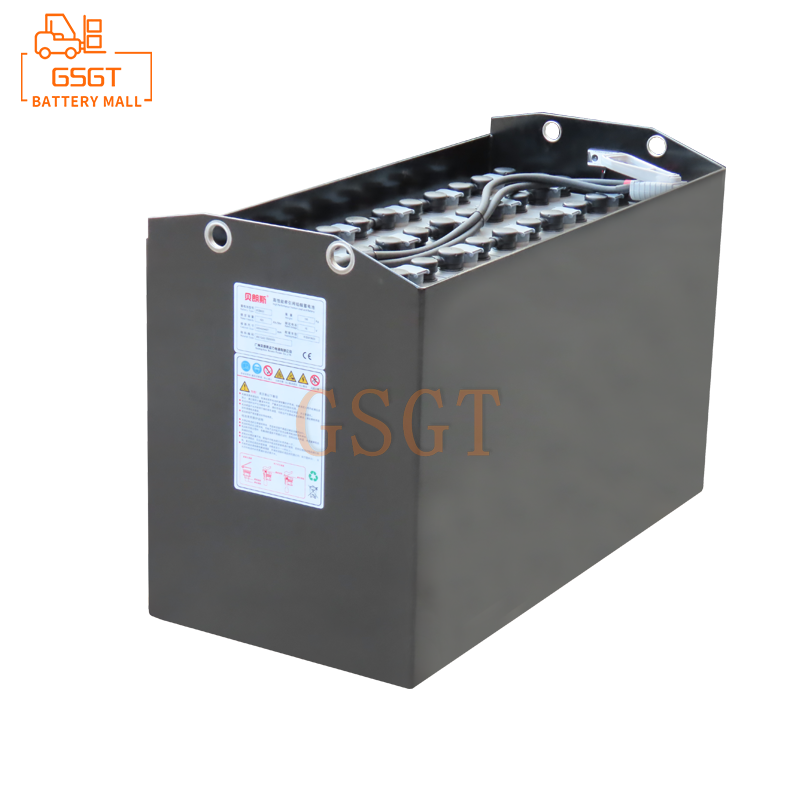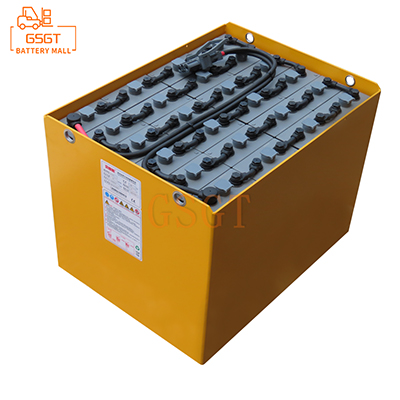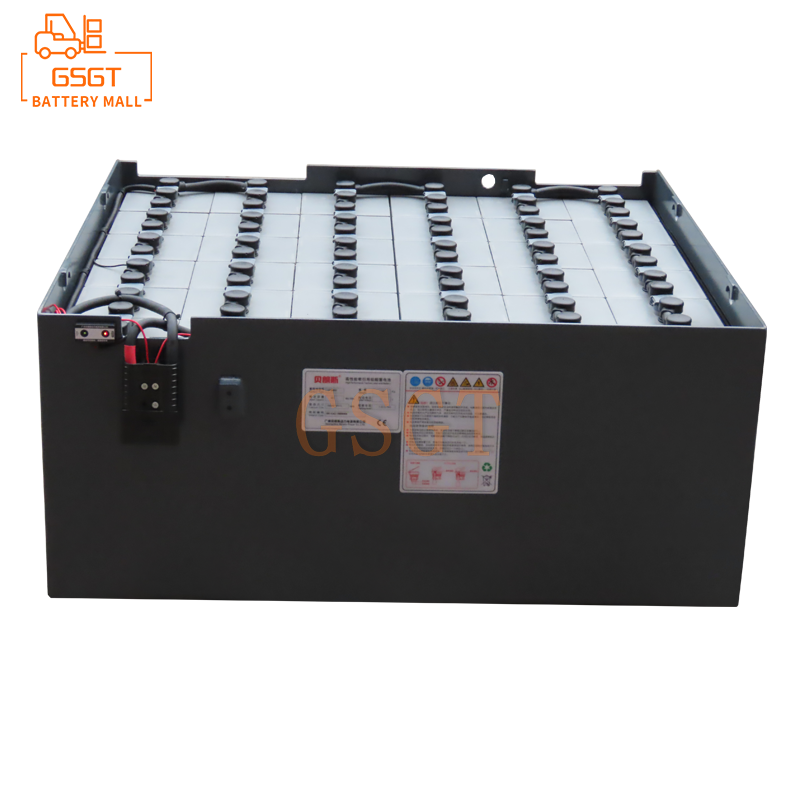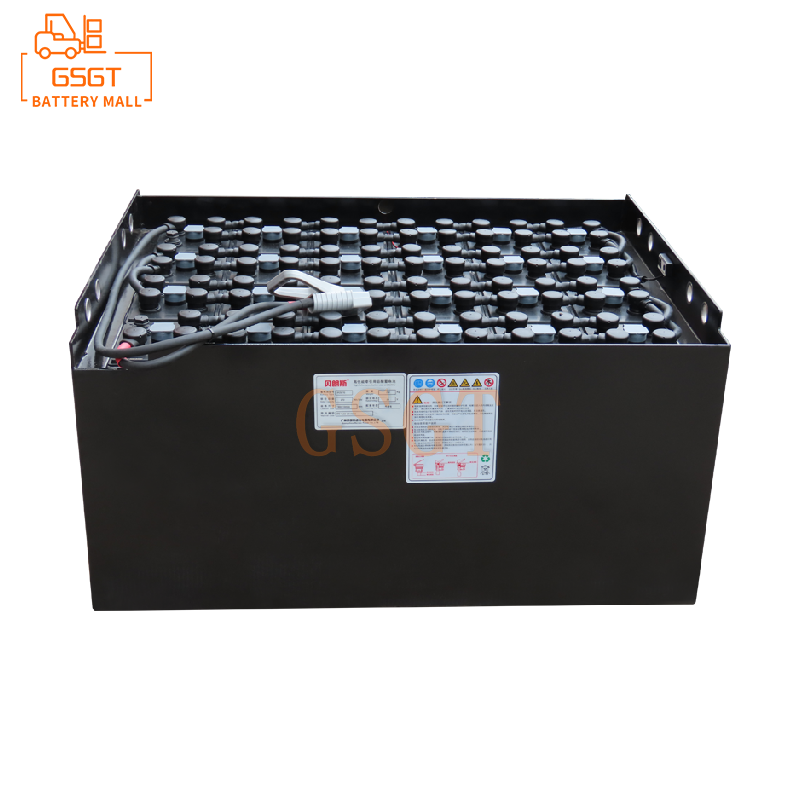Time:2025-05-07 09:43:56
Browse:628
An overview of the classification and working Characteristics of forklifts
There are various types of forklifts, and common classification methods include by power source, structural features, and application, etc. According to the power source, forklifts can be classified into internal combustion forklifts and electric forklifts. Among them, electric forklifts mainly use lead-acid batteries as one of the main power sources. Forklifts of different types vary significantly in their working characteristics.
For instance, counterbalanced forklifts, due to their structural features, have a strong load capacity and are typically used for handling heavy goods. They are frequently employed in scenarios such as logistics warehouses and manufacturing workshops. In these places, forklifts may need to operate continuously for long periods of time, frequently performing operations such as loading, unloading, handling and stacking of goods, and have high requirements for the continuity and stability of power.
Electric pallet trucks, on the other hand, are relatively small and flexible in size, mainly operating in areas with limited space such as narrow passageways and the interiors of warehouses. Its working feature is the short-distance and high-frequency transportation of relatively light goods, which requires high mobility of the forklift. At the same time, the battery also needs to be able to meet the requirements of frequent starts and stops and multiple discharges within a short period of time.
The working principle and performance indicators of lead-acid batteries
Working principle
The working principle of lead-acid batteries is based on electrochemical processes. It is mainly composed of positive plates, negative plates, electrolyte and separators, etc. During the charging process, electrical energy is converted into chemical energy and stored. The lead dioxide on the positive plate and the lead on the negative plate undergo chemical reactions under the action of the electrolyte, respectively generating lead sulfate. During discharge, chemical energy is converted into electrical energy, and lead sulfate is respectively reduced to lead dioxide and lead. At the same time, the concentration of sulfuric acid in the electrolyte decreases.
Performance index
Voltage: The voltage of lead-acid batteries is an important indicator. Common ones include 36V, 24V, etc. Multiple batteries connected in series can form battery packs of different voltage levels to meet the diverse voltage requirements of forklifts. The design voltages of different models of forklifts vary. For instance, some small electric forklifts may use battery packs of 24V or 36V, while large counterbalanced forklifts may require battery packs of 48V, 72V or even higher voltages to provide sufficient power.
Capacity: Capacity is usually measured in ampere-hours and indicates the amount of charge a battery can release under certain discharge conditions. The capacity size is directly related to the working hours and endurance of the forklift. For instance, for forklifts that need to operate continuously for long periods of time, such as those running throughout the day in large logistics warehouses, it is necessary to be equipped with large-capacity lead-acid batteries to prevent frequent charging from affecting work efficiency.
Cycle life: Cycle life refers to the number of cycles a battery can go from complete charging to complete discharging and then recharging under certain conditions. The cycle life of lead-acid batteries generally ranges from several hundred to over a thousand times. For frequently used forklifts, choosing lead-acid batteries with a longer cycle life can reduce the frequency of battery replacement and lower maintenance costs.
Charging characteristics: The charging of lead-acid batteries needs to follow certain norms. Different types of lead-acid batteries, such as common open-type lead-acid batteries and valve-regulated sealed lead-acid batteries, have different charging characteristics. Due to its sealed structure, VRLA batteries can undergo recombination reactions inside the battery during the charging process, reducing water consumption and making charging management relatively simple. When charging ordinary open-type lead-acid batteries, attention should be paid to issues such as electrolyte replenishment and gas emission.
The key factors for matching lead-acid batteries with different models of forklifts
The rated load and operating hours of forklifts
Rated load: The rated load of a forklift is one of the important bases for matching lead-acid batteries. Generally speaking, the larger the rated load of a forklift, the greater the power it requires to operate. Correspondingly, the battery needs to be able to provide a larger discharge current and higher energy output. For instance, a counterbalanced forklift with a rated load of 5 tons requires a lead-acid battery with a larger capacity and higher output power compared to an electric pallet truck with a rated load of 1 ton. If a large-load forklift is equipped with a battery that is too small in capacity, it may lead to excessive battery discharge, shorten the battery life, and at the same time fail to meet the forklift's normal demand for handling heavy objects.
Operation duration: Operation duration is also a key factor affecting battery matching. If a forklift needs to operate continuously for a long time within one shift, then the battery must have sufficient capacity to sustain the entire operation process. For instance, in some e-commerce warehouses, forklifts need to operate continuously for 8 hours or even longer. To ensure the normal operation of the forklifts, it is necessary to choose large-capacity lead-acid batteries or adopt a method of alternating the use of multiple sets of batteries. By calculating the average working current of the forklift and the estimated operating time, the capacity of the required battery can be roughly determined.
Working environment factors
Temperature: Temperature has a significant impact on the performance of lead-acid batteries. In a low-temperature environment, the viscosity of the electrolyte increases, and the diffusion rate of ions slows down, resulting in an increase in the internal resistance of the battery and a decrease in its capacity. For instance, when the ambient temperature drops below 0℃, the actual capacity of lead-acid batteries may decrease to 70% of their nominal capacity or even lower. Therefore, for forklifts operating in cold regions or low-temperature environments such as cold storage facilities, it is necessary to select lead-acid batteries with good low-temperature performance, or take appropriate insulation and heating measures. Some specially designed lead-acid batteries, by adding special additives or improving the plate materials, can enhance their performance in low-temperature environments to a certain extent. In high-temperature environments, the self-discharge rate of batteries increases, and the evaporation of the electrolyte intensifies, which can easily lead to water loss and sulfation of the plates, thereby shortening the battery's lifespan. For forklifts operating in high-temperature environments, it is necessary to select batteries with good heat dissipation performance and strengthen the heat dissipation management of the batteries, such as adding ventilation devices and regularly checking the electrolyte level, etc.
Humidity: Humidity is also one of the factors that need to be considered in the working environment. In a high-humidity environment, the casing and terminal blocks of lead-acid batteries are prone to corrosion, which affects the electrical connection performance and service life of the batteries. For forklifts operating in environments with high humidity, battery casings with good moisture-proof and anti-corrosion performance should be selected. At the same time, daily inspection and maintenance of the batteries should be strengthened, and the battery casings and terminal blocks should be cleaned regularly to prevent corrosion.
Dust and corrosive gases: In some industrial production sites, such as chemical enterprises and foundry workshops, there are large amounts of dust and corrosive gases in the environment. These dusts and gases may enter the interior of the battery, contaminating the plates and electrolyte, and accelerating the aging and damage of the battery. For forklifts operating in such environments, lead-acid batteries with good sealing performance, such as valve-regulated sealed lead-acid batteries, should be selected. Regular cleaning and maintenance of the batteries should be carried out to ensure their normal operation.
Electrical system parameters of forklifts
Voltage matching: The design voltage of the forklift's electrical system must be strictly matched with the output voltage of the lead-acid battery pack. If the voltage does not match, it may cause the motor of the forklift to fail to work properly and even damage the motor and other electrical equipment. For instance, if the electrical system of a forklift is designed with a voltage of 48V and the battery pack it is equipped with has a voltage of 36V, the motor will not be able to obtain sufficient power, and both the operating speed and load capacity of the forklift will be severely affected. Conversely, if the voltage of the battery pack is too high, exceeding the withstand voltage range of the forklift's electrical system, it may lead to the breakdown and damage of electrical components. Therefore, when choosing lead-acid batteries, it is essential to ensure that their output voltage is exactly the same as the design voltage of the forklift.
Current matching: Besides voltage matching, current matching is also very important. When forklifts are in operation such as starting, accelerating, and climbing slopes, they require batteries to provide a relatively large discharge current. Therefore, the selected lead-acid battery should be capable of meeting the maximum current demand of the forklift under these working conditions. Generally speaking, the technical parameters of a forklift will indicate its current requirements under different working conditions, such as starting current and working current. When matching batteries, it is necessary to select the appropriate battery model based on these parameters to ensure that the battery can provide sufficient current without causing damage to the battery due to excessive current.
The impact of maintenance and care of lead-acid batteries on the performance of forklifts
Key points of daily inspection
Electrolyte level check: For ordinary open-type lead-acid batteries, regularly checking the electrolyte level is an important part of maintenance and care. The electrolyte level should be maintained at a certain height above the plates, which is generally judged by the liquid level indicator line on the battery casing. If the liquid level is too low, it will cause the plates to be exposed to the air, accelerate the sulfation and corrosion of the plates, and reduce the battery capacity and lifespan. When the electrolyte level is found to be too low, distilled water or special lead-acid battery replenishment fluid should be added in time. When adding, be careful not to exceed the upper limit of the liquid level to avoid the electrolyte overflowing during the charging process.
Battery appearance inspection: Check whether there is any damage, deformation, leakage or other conditions on the battery's appearance. If the battery casing is damaged, the electrolyte may leak, which not only pollutes the surrounding environment but also affects the performance and safety of the battery. Once any problem with the appearance of the battery is found, it should be replaced in time. At the same time, check whether the battery terminals are loose or oxidized. If they are loose, tighten them in time. If there is oxidation, gently sand them with sandpaper and then apply an appropriate amount of Vaseline or a special anti-oxidation protective agent to ensure good electrical connection.
Charging status check: By observing the battery's charging status indicator light or using professional battery testing equipment, check the battery's charging status. Under normal circumstances, after the battery is fully charged, the charging status indicator light should display green. If the battery cannot be fully charged for a long time or runs out of power very quickly after charging, it may be that there is a problem with the battery, such as sulfation of the plates or internal short circuits. It is necessary to have the battery inspected or replaced in a timely manner.

$2450

$3405

$4045

$5030

MESSAGE
Professional And Efficient
Security
Affordable Price
Professional Services